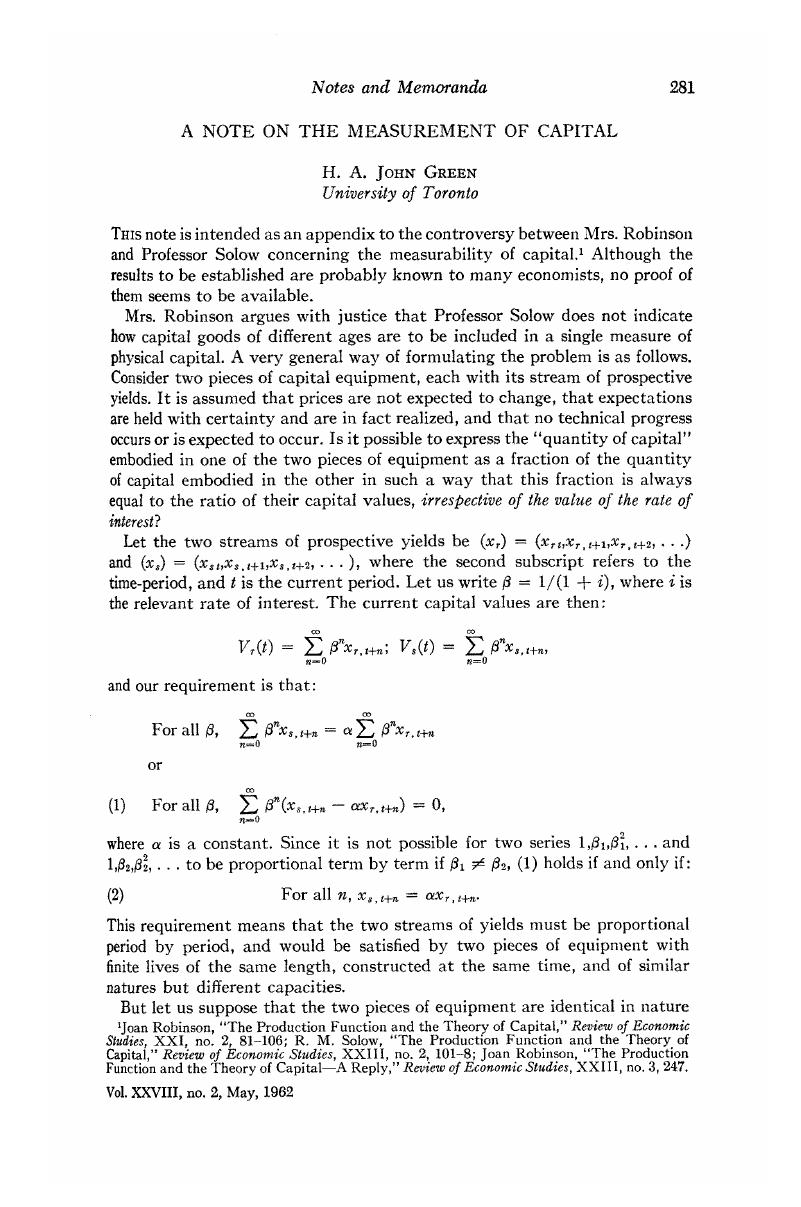Published online by Cambridge University Press: 07 November 2014

1 Robinson, Joan, “The Production Function and the Theory of Capital,” Review of Economic Studies, XXI, no. 2, 81–106 Google Scholar; Solow, R. M., “The Production Function and the Theory of Capital,” Review of Economic Studies, XXIII, no. 2, 101–8Google Scholar; Robinson, Joan, ”The Production Function and the Theory of Capital—A Reply,” Review of Economic Studies, XXIII, no. 3, 247.Google Scholar
2 Review of Economic Studies, XXIII, no. 3, 247.Google Scholar
3 Any number proportional to the value of the expression (4) will serve equally well.
4 It may reasonably be assumed that α ≦ 1, so tha t capital goods do not become more productive with age. If in addition the rate of interest is assumed positive, so that β < 1, it follows that αβ < 1. Then a piece of equipment with a yield of xr t in the current period has a capital value which is finite and equal to:
.
5 Swan, T. W., “Economic Growth and Capital Accumulation,” Economic Record, 11, 1956, 334–61, esp. 344.Google Scholar
6 Meade, J. E., A Neo-Classical Theory of Economic Growth (London, 1961).Google Scholar
7 Hirofumi Uzawa, “On a Two-Sector Model of Economic Growth,” and Solow, R. M., “Note on Uzawa's Two-Sector Model …,” Review of Economic Studies, XXIX, no. 1, 10, 1961, 40–7 and 48–50.CrossRefGoogle Scholar
8 Green, H. A. John, “Growth Models, Capital and Stability,” Economic Journal, 03, 1960, 57–73, esp. 61.Google Scholar